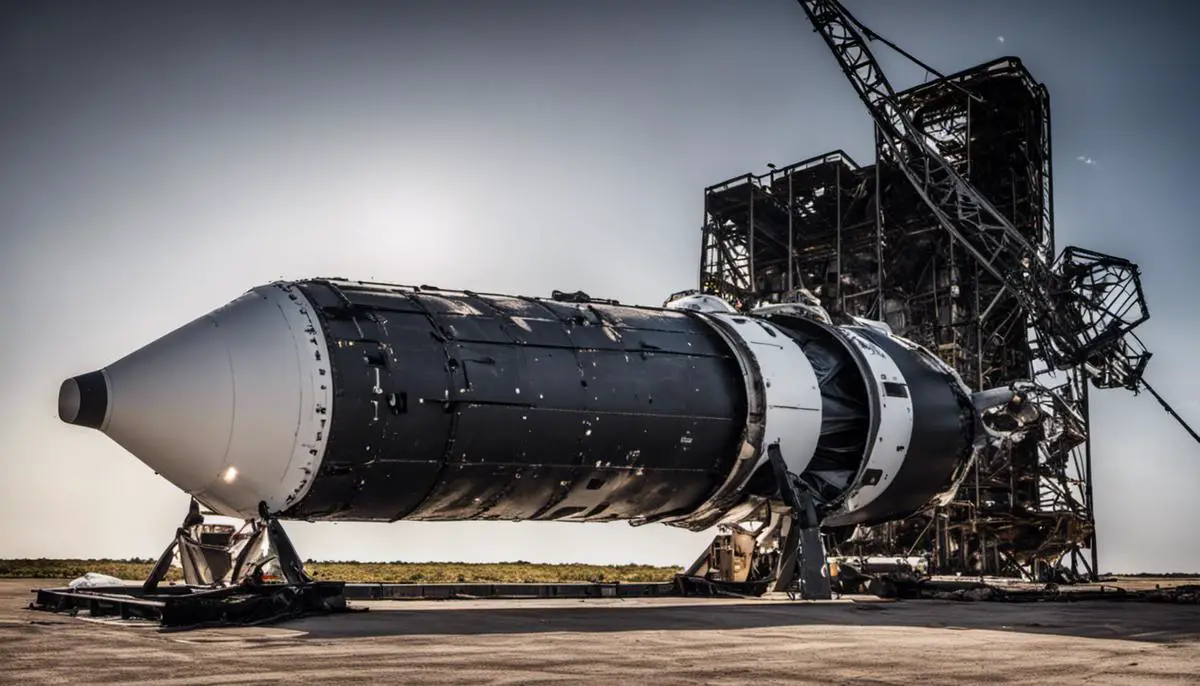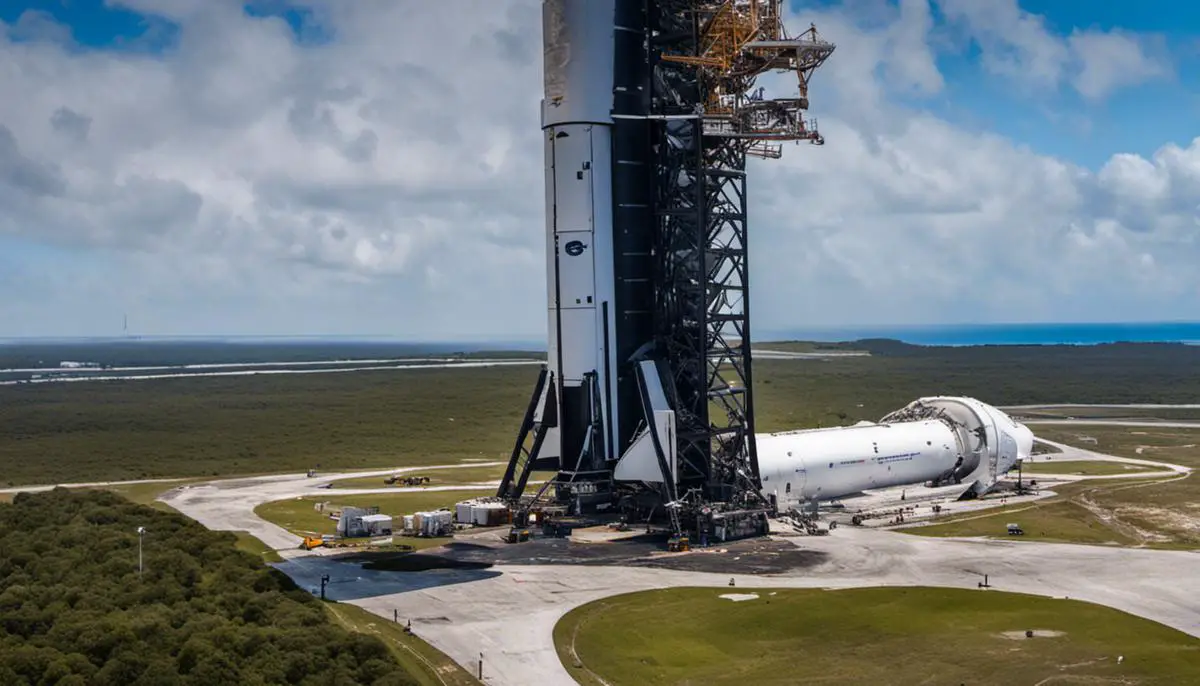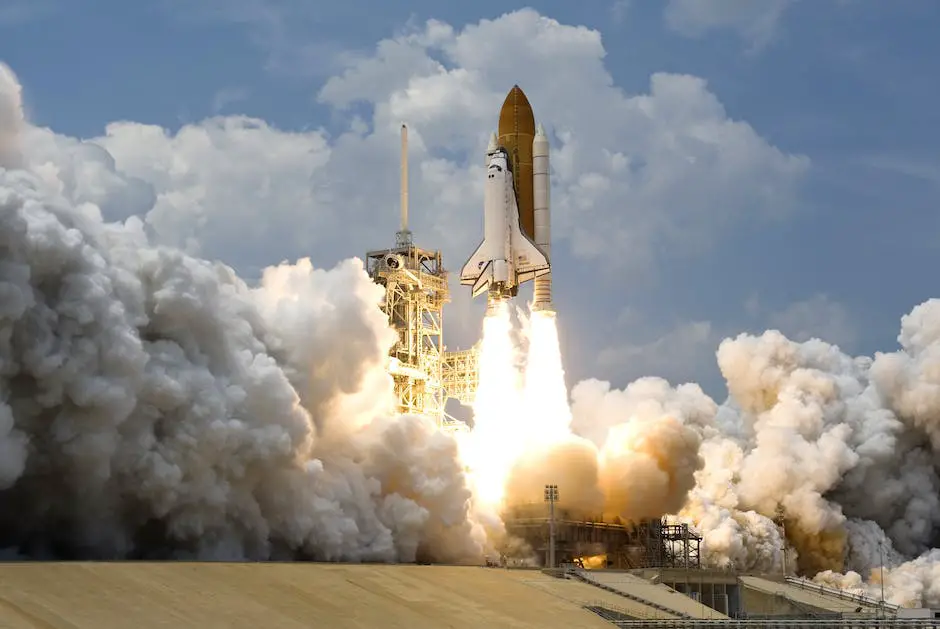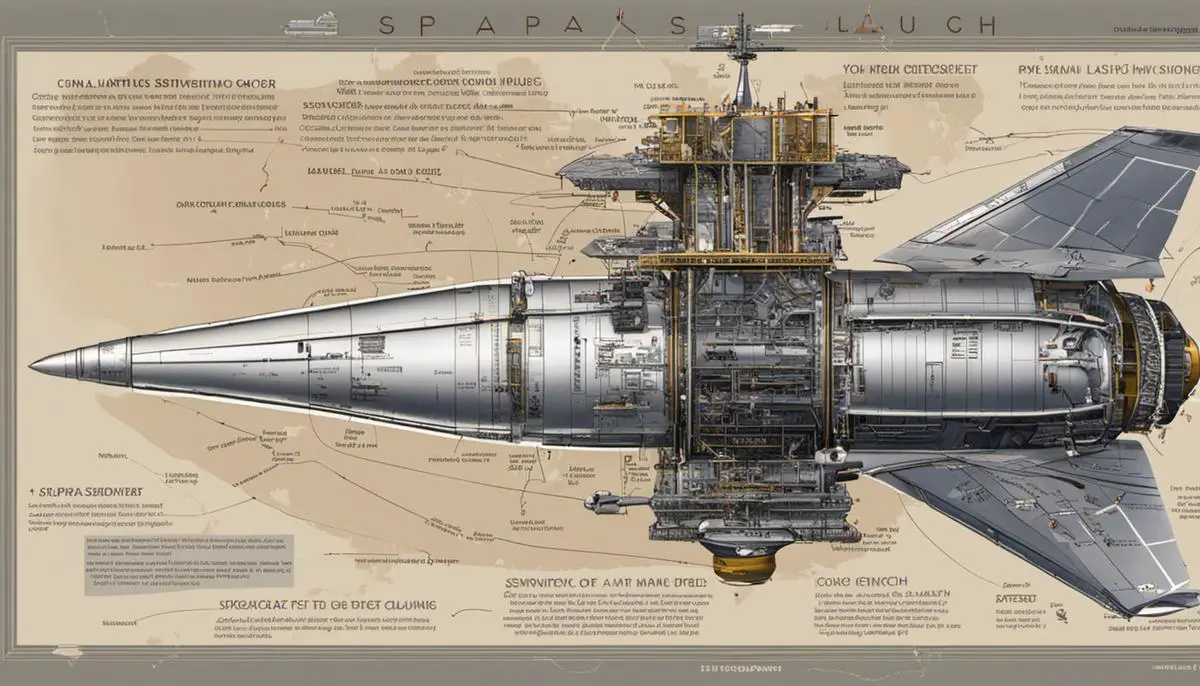The wonders of the universe have long captivated human imagination, and our relentless pursuit of space exploration has given birth to marvellous intricacies in engineering and science. Entities like SpaceX are at the forefront of this celestial conquest, having inherent their operations complexities and high-stakes challenges. Among these, launch pad damages demand particular attention, being a pivotal component of space missions that bear consequences on multiple tiers of space exploration. This discourse commences with an exploration of the fundamental mechanics of spacecraft launch, delving into the delicate balance maintained in the lift-off process and the audacious conditions withstood by the launch pad, setting the stage for an assessment of probable causes of pad damage.
Mechanics of Spacecraft Launch and Possible Causes of Pad Damage
Core Principles of Spacecraft Launch and Factors Influencing Launch Pad Damage
In evaluating the physics of launching spacecraft and the concomitant risk factors that could contribute to launch pad damage, it is imperative to grasp several core principles.
To begin with, the foundational makeup of the spacecraft launch operation is governed mainly by two critical scientific principles, Newton’s Third Law of Motion and the Tsiolkovsky Rocket Equation. The former, also known as the “action-reaction” principle, exemplifies how vectors of force act in pairs; for every action, there is an equal and opposite reaction. In this context, it underscores the thrust generated when the rocket expels its combustion gases in one direction, thereby propelling the spacecraft in the opposite direction.
Alternatively, the Tsiolkovsky Rocket Equation, named after Russian scientist Konstantin Tsiolkovsky, provides the fundamental equation of rocket motion. This equation allows us to evaluate the change in velocity of a rocket or spacecraft based on the mass of the vehicle, the mass of the propellant, and the exhaust velocity of the propellant. Comprehending these core principles supplies the bedrock of understanding the science behind the spacecraft launch.
However, along with the awe-inspiring spectacle of a launch comes the potential for launch pad damage, necessitating vigilance and sophisticated solutions. Several factors contribute to this potential damage.
- Firstly, a launch pad is subjected to extreme acoustic power levels during a launch. Sound waves generated by the combustion noise and exhaust plume associated with rocket launching can reflect off the launch pad, leading to intense vibrations and, potentially, structural damage.
- Secondly, the flame produced by a rocket’s engines discharges a substantial amount of energy that can swiftly erode and degrade the launch pad’s structure. This quick, intense thermal exposure can heat the materials used in the pad’s construction, promoting stress and uneven expansion that may lead to critical structural compromises.
- Another factor lies in the rocket’s exhaust plume interference with the launch pad’s surface. The gases expelled from the rocket can interact with the launch pad, resulting in intense pressures capable of causing structural damage.
- Lastly, any imbalances and inconsistencies in the spacecraft or rocket’s propulsion could cause abnormal directional thrust, leading to impact damage. This unbalanced release of force can potentially lead to a catastrophic condition of reduced stability during the launch process.
It is, hence, vital to have thoroughgoing measures to mitigate these risks, including employing advanced materials resilient to thermal and acoustic energy, constructing flame trenches and deflectors, and ensuring strict quality control in building and fueling spacecraft. Through knowledge and caution, humans can continue their pursuit of space exploration with the least compromise to the apparatus that enables this landmark endeavor.

Detailed Study of SpaceX Launch Pad Damage Instances
A Deep-Dive into SpaceX Launch Pad Damages: Specific Incidents and Their Causes
One of the most pressing challenges facing modern rocket launches is the occurrence of launch pad damages. This concern has been particularly evident in several SpaceX operations where the profound impact of these damages has necessitated significant countermeasures. As revealed by careful study and systematic documentation, SpaceX launch pad damages have largely resulted from various phenomena ranging from cryogenic fuel leakage to reignition of expelled propellants.
A notable instance occurred on September 1, 2016, during the SpaceX Falcon 9 static fire test at Cape Canaveral Air Force Station. An anomaly in the second stage’s liquid oxygen tank led to a catastrophic explosion. This accident, which destroyed both the rocket and its payload, was particularly crippling as it severely damaged Space Launch Complex 40 (SLC-40) to an emergency halt situation. The event spurred SpaceX to take extensive remedial action for the failed pre-launch static fire test and resulted in operational refinements.
Another significant incident took place during the inaugural Falcon Heavy launch on February 6, 2018. The rocket’s central core failed to land on the drone ship ‘Of Course I Still Love You.’ Instead, it crashed into the Atlantic Ocean at a speed exceeding 300 mph due to an insufficient ignition fluid reignition. The crash’s impact raised the question of the robustness of SpaceX’s launch pads and their ability to withstand such high-velocity impacts, emphasizing the need for enhanced safety measures.
Cryogenic fuel leakage represents another factor contributing to SpaceX launch pad damages. Cryogenic propellants like liquid oxygen and liquid hydrogen are often housed in close proximity to extremely sensitive components, thus increasing the risk of leakage. Such a mishap occurred at Boca Chica, Texas, in November 2019 when a prototype of the Starship Mk1 vehicle experienced a catastrophic failure due to a cryogenic pressure test. The incident, triggered by the breach of a lower bulkhead, led to significant damage at the test site, underscoring the risks associated with the use of cryogenic propellants.
Pyrotechnic shock, usually caused by reignition of propellants, is another cause for concern. The failure of the Falcon 9’s AMOS-6 mission in 2016 resulted from such a pyrotechnic shock and led to substantial damage to the launch pad. An investigation into the AMOS-6 anomaly ascertained the accident’s source was a breach in the second stage’s liquid oxygen tank’s helium system. This event emphasized the need for a more comprehensive backlash preventive strategy for the reignition of expelled propellants.
Propellant loading is another procedure fraught with risks, as demonstrated by the Crew Dragon static fire test incident in April 2019. The vehicle suffered an unexpected anomaly resulting in complete destruction. The cause was a leaking component that allowed liquid oxidizer, specifically nitrogen tetroxide, to enter high-pressure helium tubes during ground processing. Although no one was injured, the incident resulted in the loss of the crew capsule and caused substantive launch pad damage.
In conclusion, understanding the specifics behind these instances of SpaceX launch pad damages signifies the shifts needed in space technology. Continued studies and advancements are required to achieve safer launches and reduce the risk of repeated incidents. By applying the lessons from these episodes, SpaceX continues its progressive trajectory, investing in comprehensive preventive measures and damage control protocols that ensure a safer future for space exploration.

Impact of Launch Pad Damages on SpaceX’s Operations
In the annals of SpaceX’s operational history, incidents of launch pad damage have proven consequential in the company’s mission scheduling and ultimate achievement of objectives. SpaceX’s resilience lies in its ability to learn from these incidents, modifying operational procedures and introducing technological improvements. A few key recorded instances of launch pad damage provide insight into this complex dynamic.
The anomaly in Falcon 9’s liquid oxygen tank during a static fire test in 2016 led to an explosion, causing extensive launch pad damages. The aftermath significantly impacted the scheduling of SpaceX’s missions. The reconstruction and certification of the launch pad took an exhaustive four months, during which SpaceX could not conduct any East Coast launches. This severely hampered the company’s operational efficiency and contributed to a backlog of scheduled launches.
During the Falcon Heavy launch in 2018, the central core failed to land on the drone ship, causing an array of minor damages. While this did not deliver a cessation of operations as prior incidents, the anomaly necessitated additional precautionary measures and adjustments to future missions to avoid recurrence.
In yet another occurrence, the Starship Mk1 prototype experienced a catastrophic failure during a pressurization test due to cryogenic fuel leakage. The subsequent explosion not only destroyed the vehicle but also significantly impaired the launch pad. Again, the downtime following the incident, coupled with launch pad repairs and safety inspections, led to considerable mission rescheduling.
The incident during the AMOS-6 mission in 2016, where pyrotechnic shock caused by reignition of propellants led to a total loss of the satellite and material damage to the launch pad, reverberates as a stark reminder of the inherent risks within rocket launch operations. Despite safety precautions, the dual propellant system used in the Falcon 9 has innate risks, including the potential for spontaneous ignition.
The propellant loading incident during the Crew Dragon’s static fire test in 2019 presented a conundrum relating to an integral part of the SpaceX’s process. The mishap led to the destruction of the Crew Dragon capsule, indirectly hampering the development timeline for SpaceX’s crewed missions. This prompted a critical examination of fueling procedures which, despite delaying operations, was an essential recalibration of safety measures.
These instances emphasize the impact of launch pad damage on SpaceX’s operations and mission scheduling. Every incident has resulted in procedural adjustments and technological evolutions, with the ultimate goal being to minimize risk to both hardware and personnel. While time-consuming and often an operational setback, these adaptations exemplify SpaceX’s commitment to achieving its core objective: the realization of safe and sustainable space travel.

Mitigation and Control Measures for Launch Pad Damages
SpaceX has been at the forefront of technological advances to not only revolutionize space exploration but also to address the complex engineering challenges associated with rocket launches. Diving deeper into the subject, various effective control strategies have emerged as solutions to mitigate risk and reduce the frequency of launch pad damages.
A key strategy implemented by SpaceX is the utilization of Automated Flight Safety Systems (AFSS). This cutting-edge system makes a real-time analysis of the vehicle’s flight path and enforces a self-destruct command if the vehicle veers off a predefined trajectory. This system significantly reduces the risk of irregular flight paths and subsequent impact damage to the launch pad thus enhancing its reliability in operation.
Pushing forward with more proactive measures, SpaceX has also adopted innovations in material science. The use of advanced heat-resistant materials in the construction of the launch pads can help alleviate the problems related to thermal exposure. Such materials can withstand the massively high temperatures experienced during rocket launches, strengthening the integrity of the launch pad infrastructure over repeated uses.
The way SpaceX deals with acoustic shockwaves generated during the lift-off is another notable consideration. The implementation of a Water Deluge System, also known as Sound Suppression Water System, has established itself as a fundamental solution. By releasing huge quantities of water onto the launch pad before and during the lift-off, the system absorbs the acoustic energy and mitigates the damaging effects of sound waves on the structure. In turn, this greatly reduces associated erosive or degrading impacts.
In the wake of past anomalies related to cryogenic fuel, measures have been put in place for better management of this crucial aspect. For instance, the cryogenic fuel is now loaded closer to the launch time, thus minimizing the exposure of the volatile liquids to potential compromising situations. Additionally, SpaceX employs pressure regulation during fueling operations to avoid robust propellant reactions that might culminate in catastrophic incidents.
Furthermore, SpaceX continues to harness the power of simulation technologies. By using computational fluid dynamics to model exhaust plume interference, they can predict its effects on the launch pad surface and make necessary design changes to minimize these risks. This preemptive measure adds another layer of security to the mission operations.
The unfortunate past incidents involving propellant loading and pyrotechnic shock are paramount reminders of the importance of safety standards in SpaceX’s operations. In response, the organization has instituted rigorous testing procedures and safety checklists before every launch. Such strict adherence to safety protocols is bound to lessen the potential for malfunction and consequent launch pad damage.
Analyzing these mitigation strategies, it becomes evident that SpaceX continues to make significant strides in addressing the engineering challenges associated with launch pad damages. Considering the ever-evolving nature of technology and our understanding of physics, it is thrilling to anticipate what further safeguards and advances SpaceX might adopt in the future as they continue their drive towards stellar heights.

Indeed, progress never comes without its fair share of trials and tribulations. In the arena of space exploration and technology, these challenges mutate into colossal proportions. Yet, each setback serves as an opportunity for advancement and innovation, and it is no different with launch pad damages. This examination of SpaceX’s narrative reveals its prowess in devising responses to these adversities, unrelenting in its drive to triumph over the impediments to the final frontier. Commendably, the company’s intent to implement dynamic strategies—ranging from technology to protocol—ensures the reduction of launch pad damages, thereby buttressing its infrastructural strength and maintaining the esteemed integrity of its space programs. The journey is unpredictable, but with the power of human ingenuity, it remains an aspirational adventure towards the stars and beyond.
![]()
